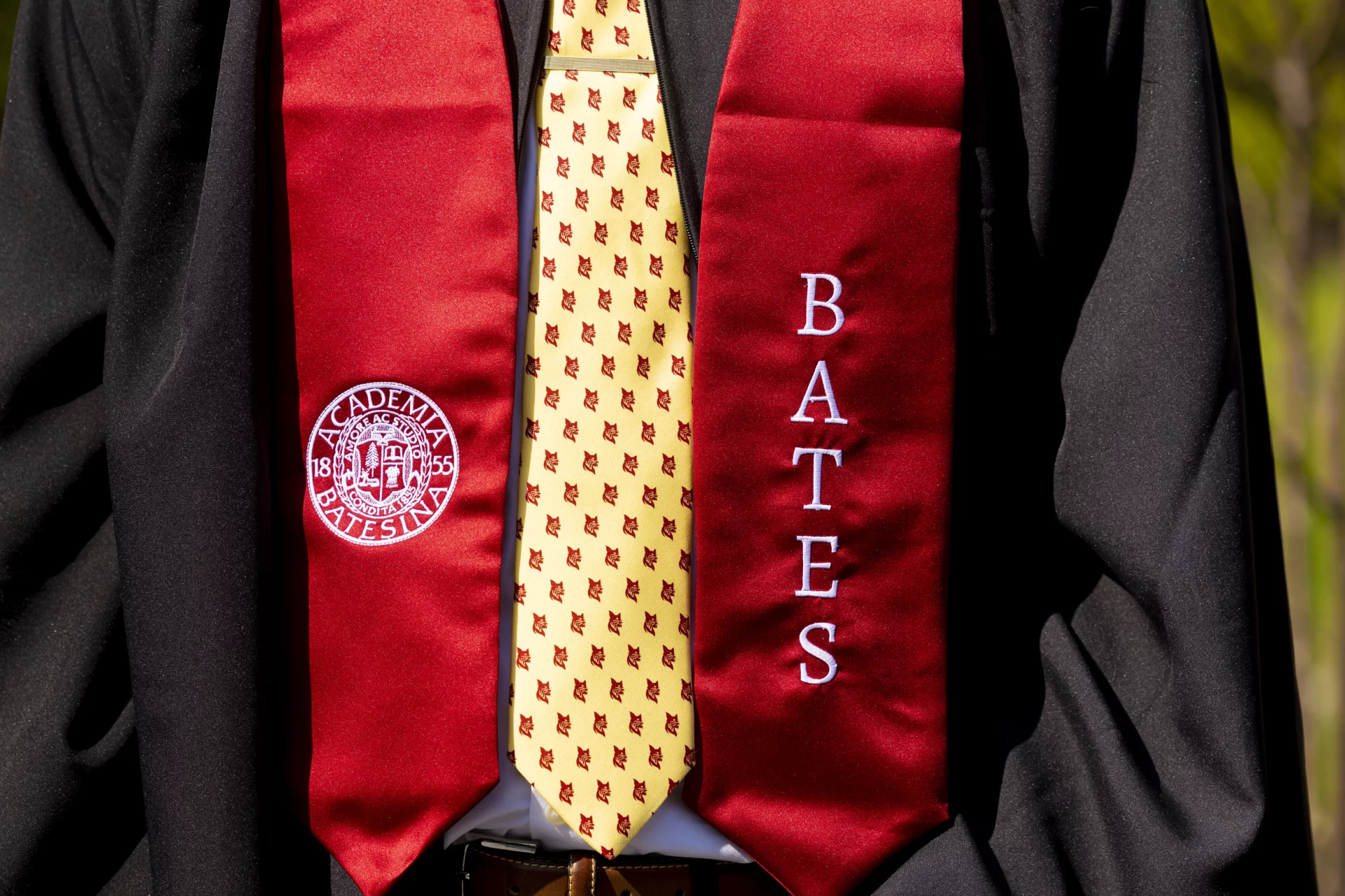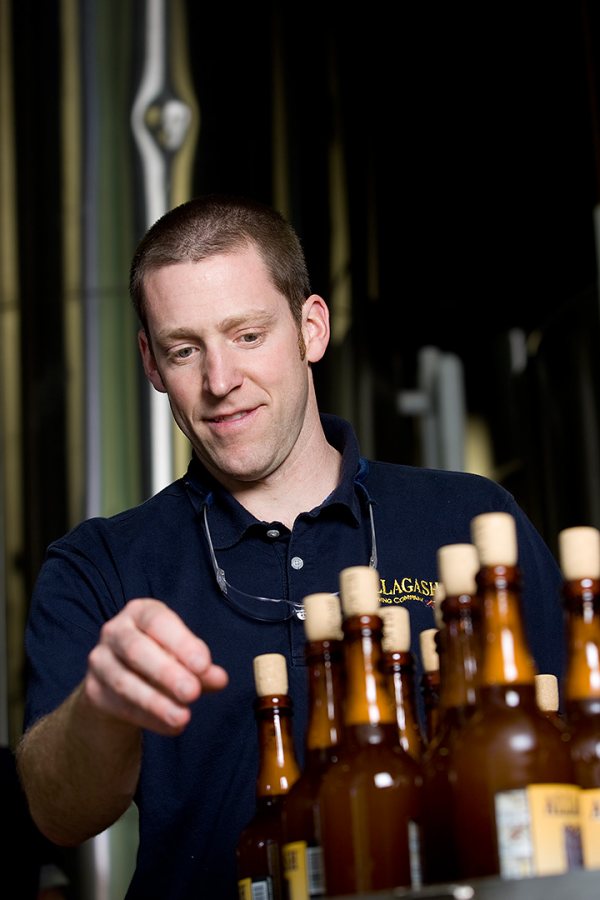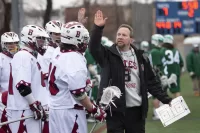
Bates in the News: Jan. 30
Edward Meloni ’91
Can xenon gas treat post-traumatic stress disorder?
Various media outlets including Newsweek and The Boston Globe reported on research by neuroscientist Edward Meloni ’91 suggesting that xenon gas could be used to treat post-traumatic stress disorder and other memory-related disorders.
Meloni and his team’s findings were first published in the article “Xenon Impairs Reconsolidation of Fear Memories in a Rat Model of Post-Traumatic Stress Disorder (PTSD)” in the journal PLOS ONE.
![Xenon gas fills a discharge tube shaped like the element’s atomic symbol. (Photograph by Pslawinski [CC BY-SA 2.5], via Wikimedia Commons)](https://www.bates.edu/news/files/2015/01/web-XeTube.jpg)
Xenon gas fills a discharge tube shaped like the element’s atomic symbol. (Photograph by Pslawinski [CC BY-SA 2.5], via Wikimedia Commons)
It turns out that “every time you reactivate a memory — that is, recall it — it’s susceptible to modification,” explains Meloni.
Meloni tells Newsweek reporter Douglas Main that once retrieved, “the memory can also be changed or added to, in a process called reconsolidation.” Meloni says that the gas “prevents a memory from being re-encoded, which may allow it — or its emotional significance — to begin to fade.”
He tells Newsweek that “we really think we blocked this process of reconsolidation.”
Meloni, who earned a doctorate in neuroscience at Yale in 2000, is an assistant psychologist at Harvard’s McLean Hospital and an assistant professor of psychiatry at Harvard Medical School.
At McLean, he does his research in the Behavioral Genetics Lab program, headed up by Professor of Psychiatry Bill Carlezon ’86. (And, as Meloni reports with pride, he and Carlezon “were both students of John Kelsey,” professor emeritus of psychology.)
Peter Lasagna
Diversity, inclusion and lacrosse
Bates’ head lacrosse coach Peter Lasagna writes a column for Inside Lacrosse, and his February piece addresses his sport’s progress toward greater diversity and inclusion.
While two of the best NCAA players are students of color (and are on the magazine’s cover), “featuring [Lyle] Thompson and [Myles] Jones does not mean lacrosse has achieved racial nirvana,” Lasagna writes.
Lasagna recalled what happened when, in 2012, professional player Jovan Miller, who is black, boycotted the equipment manufacturer Warrior for using the hashtag “ninjaplease,” the word “ninja” being a proxy for the N-word, according to some definitions.
“The backlash [against Miller] exposed the most ignorant intersection of lacrosse and American culture,” Lasagna writes. “Let’s be properly proud of progress made without falling prey to the disease of short historical memory. Measurable improvement does not mean we’re finished working on increased access and opportunity for all.”

Men’s lacrosse coach Peter Lasagna speaks to the team during a game in March 2014. (Sarah Crosby/Bates College)
Hilary Christensen
Truth from the tooth
Scientists have long known that they can infer an animal’s diet by looking at its teeth. For example, the heavily pitted surfaces of a squirrel’s teeth tell us that it has been chomping nuts.
But can the pattern of scratches and pits on one species’ teeth, like the squirrel’s, indicate the diet of a very different animal, even a fossil mammal with no living relatives?
![The"microwear" seen on one species' teeth can infer the diet of another, even an extinct species like the cave bear, Ursus spelaeus, whose jaw is shown here. (Photograph by Didier Descouens [CC BY-SA 3.0], via Wikimedia Commons)](https://www.bates.edu/news/files/2015/01/web-Ours_des_carvernes_-_Crâne-900x600.jpg)
The pattern of “microwear” on one species’ teeth can be used to infer the diet of another species, even an extinct animal like the cave bear, Ursus spelaeus, whose jaw is shown here. (Photograph by Didier Descouens [CC BY-SA 3.0], via Wikimedia Commons)
Her paper, “Similar Associations of Tooth Microwear and Morphology Indicate Similar Diet across Marsupial and Placental Mammals,” in the journal PLOS ONE, offers a way of “assigning a general dietary category to an animal with a truly unknown ecology.”
After comparing and contrasting the “microwear” — tiny scratches and pits — on the teeth of various animals, Christensen developed a flow chart that can reveal the diet of almost any type of animal, whether mammal or marsupial.
Christensen’s flow chart shows how a scientist could infer an animal’s “feeding guild” by knowing its body size, tooth morphology and microwear.
Let’s say that a scientist only had access to a museum specimen of an extinct species.
By knowing the general size of the specimen, and having access to at least one molar, albeit fossilized, the scientist could infer whether the animal browsed on trees and shrubs, grazed on grass, fed on fruits, ate insects or devoured meat.
“It’s a very powerful tool,” Christensen says.
MLK Day at Bates
A different kind of commemoration
In its coverage of the college’s MLK Day observance, the Portland Press Herald made connections between Bates’ founding ideals, alumnus Benjamin Mays ’20, and King.
Reporter Kelley Bouchard interviewed Associate Dean of Students James Reese, a key figure in the college’s MLK Day history, who noted that Mays’ relationship with King didn’t end when King graduate from Morehouse, where Mays was president.
“King would call on Mays for advice and to discuss approaches to protests, so [their] bond was even stronger than the mentor role he had during King’s college years,” Reese said.
Meanwhile, a column by Rick Cohen in Nonprofit Quarterly cited the college’s MLK Day programming as an example of the “different kind of MLK Day commemoration” that is needed today.
The Bates MLK Day theme was “From Selma to Ferguson: 50 Years of Nonviolent Dissent.”
Cohen wrote: “In 2015, we should all be showing courage to analyze, address and attack overt, structural, institutional and implicit racism” on MLK Day and guard against “making his holiday one that doesn’t forthrightly address issues of race.”
Jason Perkins ’97 and Gary Dzen ’05
A brewmaster’s interlude
Alumni were on both sides of a Boston Globe story about how Allagash came up with its Interlude beer.
Gary Dzen ’05 writes the Globe‘s 99 Bottles beer column, and he interviewed Jason Perkins ’97, Allagash brewmaster, about how a “rogue yeast” is part of the beer’s story.

Jason Perkins ’97 of Allagash Brewing Company, photographed in 2008 at the brewery’s headquarters in Portland, Maine. (Phyllis Graber Jensen/Bates College).
The yeast, a particular strain of Brettanomyces, spoiled a batch of beer some years ago. But as Dzen writes, “the uninvited yeast, once isolated, can actually make some pretty great beer.”
He writes:
“[The yeast] works slowly, giving off tropical fruit character as it chews through the beer. Some strains of Brettanomyces are known for the funky, barnyard notes they impart into a brew. In this Allagash beer those notes are present but overshadowed by passion fruit and pineapple, according to brewmaster Jason Perkins.”
Dzen’s verdict? “It’s a little sour but mostly fruity, a little funky but not enough to remind you of wet socks. This is a big beer (9.5 percent alcohol by volume), but you shouldn’t be afraid to walk up and shake its hand.”




